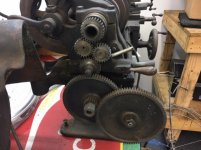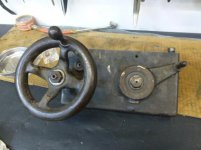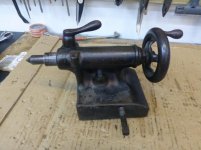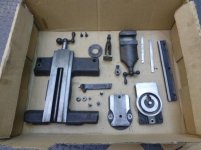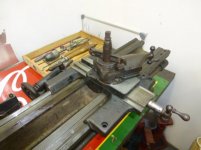jmills
Plastic
- Joined
- Apr 22, 2013
- Location
- Charleston, SC
New member here who is also new to lathes. I have, what I believe, is a 9" Junior lathe. It's serial number is 44073A, which from what I have read, puts it in the ballpark 1929 manufacture date. The lathe is been in the family since new and I have had possession of it for the last couple of years. Ever since I have had it, I have wanted to get it up and running, but it has taken until now to get to where I can focus on it. I feel like I owe it to the latch to get it back in operation after is has been sitting for the last couple of decades.
As much as I admire the complete restorations of lathes on this forum, at this point, I am just looking to get it up and running. As I said earlier, I am new to lathes and would like to be able to start to learn what all I can do with it and then slowly go through it more thoroughly one part at a time.
I am a lifelong tinkerer and am normally playing with cars, so taking things like this apart (and getting them back together) doesn't scare me. I have a feeling that once I have this up and running, it will turn out to be one of the best tools I didn't know I needed.
I am looking for some advice as to where to start. As far as I know, the motor works, the belt is in place and everything spins by hand. I am missing all the change gears and I believe there are some parts missing from the apron. There are no gears connecting the apron to the lead screw. Eventually, I would like to be able to cut threads, but getting the rest of it in operation is my priority at this time. Below are a couple of pics.


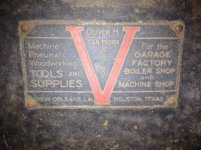

Here is a picture of the back of the apron.
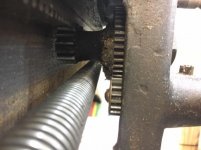
As much as I admire the complete restorations of lathes on this forum, at this point, I am just looking to get it up and running. As I said earlier, I am new to lathes and would like to be able to start to learn what all I can do with it and then slowly go through it more thoroughly one part at a time.
I am a lifelong tinkerer and am normally playing with cars, so taking things like this apart (and getting them back together) doesn't scare me. I have a feeling that once I have this up and running, it will turn out to be one of the best tools I didn't know I needed.
I am looking for some advice as to where to start. As far as I know, the motor works, the belt is in place and everything spins by hand. I am missing all the change gears and I believe there are some parts missing from the apron. There are no gears connecting the apron to the lead screw. Eventually, I would like to be able to cut threads, but getting the rest of it in operation is my priority at this time. Below are a couple of pics.




Here is a picture of the back of the apron.



